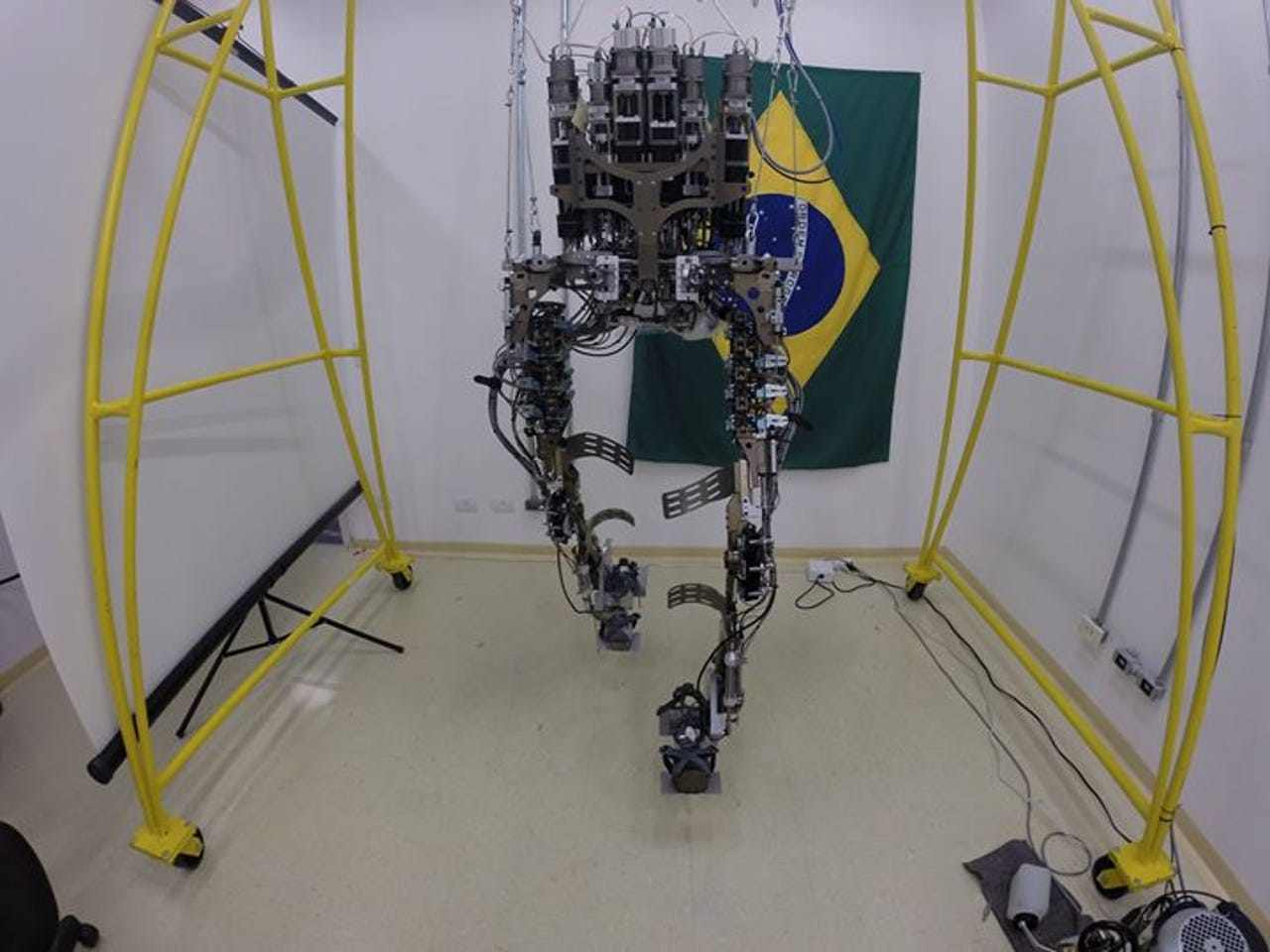Next generation bionic limbs will have eyes of their own

Last year in Brazil, a teen with lower-body paralysis stood up and kicked the opening ball of the 2014 World Cup. Controlled by signals fed to the device from the operator's brain, the demonstration tugged at the heart-strings and served to underline recent advances in human-machine-interface technology. But the walking itself, the way the machine made the boy move, left something to be desired. Despite advances, bipedal robots and lower extremity bionics are still in their clunky, uncoordinated adolescence when it comes to strolling in real-world environments.

The potential payoff for bionics makers that can develop bionic prostheses offering a natural human gait across all terrain is huge. The global prosthetics market is forecast to reach $19.4B by 2017, according to data from Global Industry Analysts.
One of challenge is that it's hard to pass control signals from the brain to the device in real time. A solution that's shown promise in labs is Surface Electromyography (SEMG). SEMG sensors measure electrical activity when a nerve stimulates a muscle. When you're talking about a bionic prosthesis, sensors on the skin above the point of amputation can measure the signals that the amputee's brain is trying to send to his or her missing leg. But there are limitations with this approach.
"The sensors pose issues," says Mo Rastgaar, a professor of mechanical engineering at Michigan Tech and an expert on bionic devices. "One is sweat. It's not always going to work perfectly." Another issue is muscle adaptation. The muscles above an amputation will change over time, which means a possible skewing or degrading of the control signals that SEMG sensors measure. One alternative that's being studied is to surgically implant sensors below the muscles. This approach holds tremendous promise, but would also require an invasive procedure, a step that consumers may not find attractive when the technology makes its way to market.
Rastgaar and his team at Michigan Tech are developing a bionic ankle with two degrees of freedom, one more than current devices. The design allows for dynamic movement that's close to that of a human ankle. Instead of relying on SEMG sensors, the researchers are looking at artificial vision technology, which has made rapid strides thanks to investments in autonomous cars, smart industrial robots, medical imaging technology, and new surveillance systems.
"The camera scans the area where there is a high probability the user is going to step next," Rastgaar explains. Then it sends signals back to the limb's processor: in this area, the ground is a little bit inclined, or there are stairs ahead. "Using that info, the robot changes its pose and stiffness to give a smooth gait for the user."
By analyzing the terrain ahead, such a system would avoid the inevitable signal noise associated with measuring minute and easily misinterpreted electrical impulses through the skin. There would also be very little calibration necessary in the Michigan Tech design, which will be an advantage if the technology makes it to market. One question that remains is how readily users will adapt to and trust a bionic limb that, at least to some extent, automatically controls itself. We may not be conscious of the more subtle movements of our feet and ankles, but having no direct control at all could be disconcerting.
The technology is not slated to make it out of the lab for at least a few years. Part of the problem with lower extremity bionics is more fundamental than figuring out the best way to interpret the user's intentions.
"It's not all about the robots or devices we can produce," says Rastgaar. "We don't know how gait is actually regulated in humans or mammals. We're making robots now in order to do trial and error to get to the right answer."
Translation: For all of our technological achievement, we don't really know how humans walk. Our best bet right now is sending a bunch of devices onto the pitch and seeing what looks best.